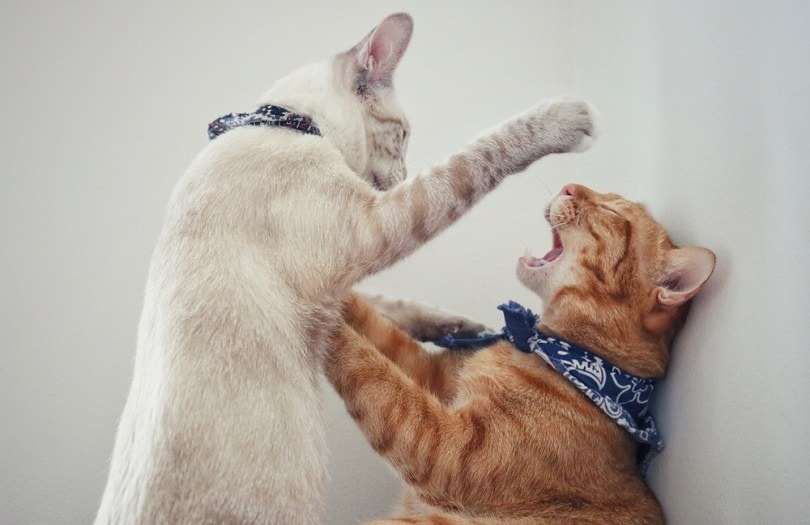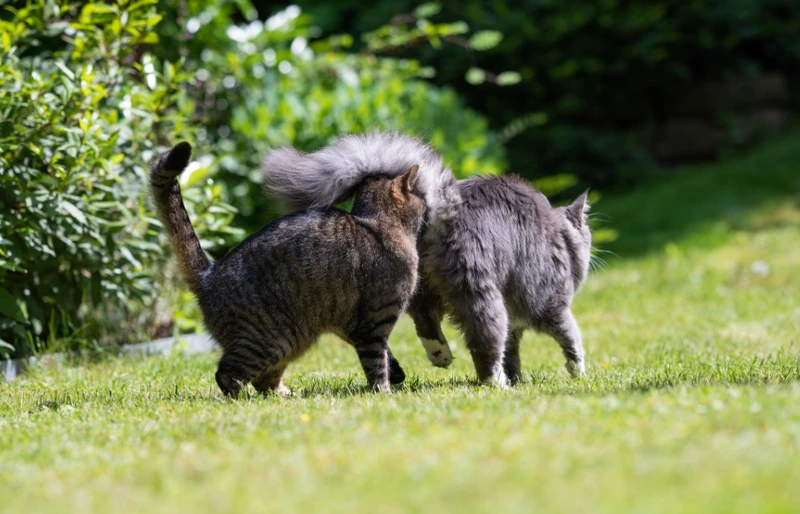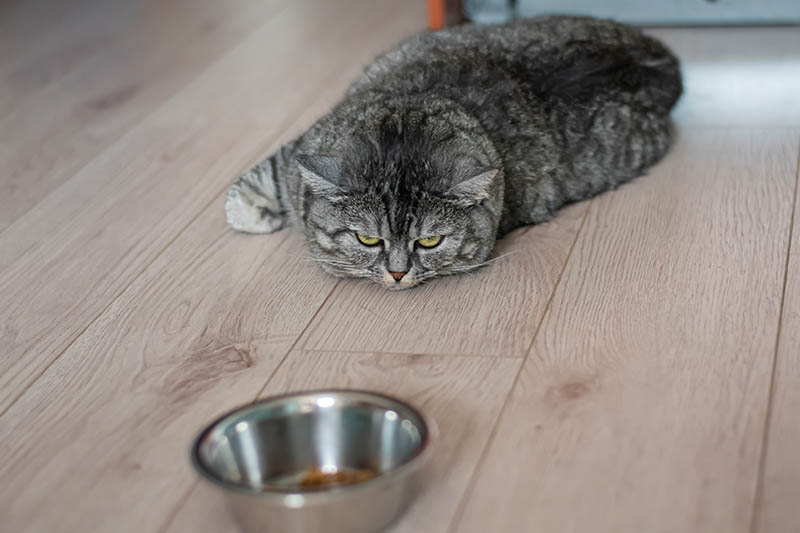VET APPROVED

The information is current and up-to-date in accordance with the latest veterinarian research.
Learn more »Click to Skip Ahead
If you’re the proud owner of more than one cat, it’s always best if your cats can live in harmony with one another. However, it’s not always easy to know if cats are playing or fighting because cats meow, hiss, and pounce around a lot!
It’s common for people to think their cats are fighting when, in fact, their felines are engaged in some rousing play sessions. It’s also quite normal for a play session between cats to escalate into something more serious. When this occurs, you’ll often hear hissing, which can be a sign that one of the cats has had enough.
Since it can be tough to know the difference between cats playing and a cat fight, we’ve put together the following information to help you out. Here are three ways to tell if cats are playing or fighting.

The 3 Ways to Tell If Cats Are Playing or Fighting
1. Pay Attention to Their Behavior
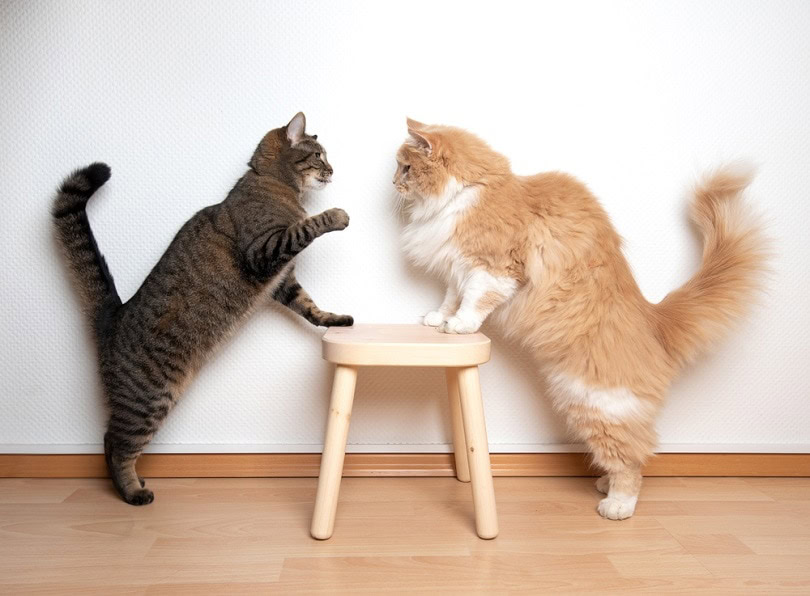
When two cats are playing, they’ll often jump on each other, chase each other around, and even do some “play biting”. The cats’ body language will look relaxed and not tense. A cat playing will often take turns being the one on the bottom of the wrestling match. It’s also common for playing cats to take a break to catch a breath now and then.
Two cats that are fighting will display a lot of tension in their body language. If one cat chases another cat to the point that the other runs and hides, that’s a clear indicator that the two felines are not playing.
Two cats that continually act aggressively toward one another may end up with one or both becoming injured. If you see your cats behaving in such a manner, it’s best to step in and separate them before any injuries can occur.
2. Watch the Eyes, Ears, Fur, and Tail
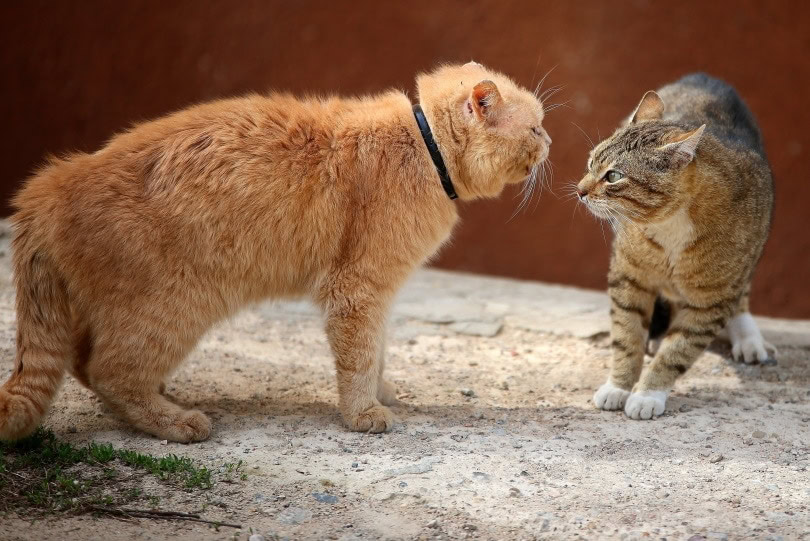
Cats flatten their ears and dilate their pupils when they’re fighting. They will also fluff up their fur to make themselves look bigger and hold their tails erect and upright.
There’s a lot of tension in the air when two cats are about to fight. They’ll hump their backs, stare at one another, and look very uneasy. Cats display very clear signs of confrontation using their ears, eyes, fur, and tail, and they look anything but relaxed.
3. Listen to the Vocalizations
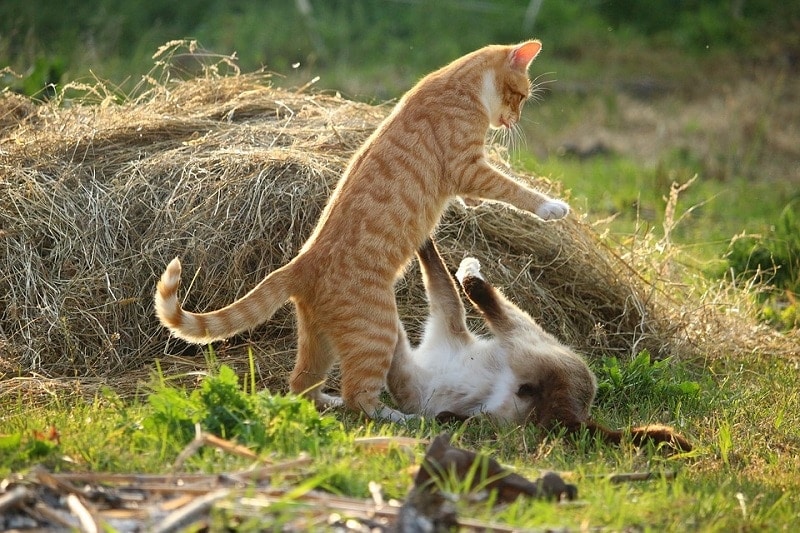
When two cats are being friendly and playing, it’s common to hear a meow now and then. It’s also normal to hear a brief hiss on occasion as the two cats are having fun running, jumping, and chasing each other. Things sound much different when two cats are fighting. They’ll both make loud, continuous noises that may include meowing, growling, hissing, and screaming.
Maybe you’ve had your sleep disrupted at night by the sound of a catfight outside your window. You probably knew right away that those piercing cat calls were not coming from animals engaged in play, and you were probably right.
A catfight is seldom quiet or very pleasant to listen to. If two cats are making loud vocalizations that don’t sound very friendly, there’s surely trouble brewing!

What to Do If Your Cats Are Fighting
It’s never fun to have unhappy cats that don’t get along. If you notice that your cats are fighting, you should separate the animals as soon as possible. But how in the world do you break up a catfight?
You should never intervene physically because you or your cat may get hurt. The best way to break up a catfight is to make a loud noise that startles the cats. Simply clapping your hands may do the trick or banging a spoon on a kitchen pot.
If your cats simply won’t give peace a chance, speak with your vet or a cat behaviorist for expert guidance. They can help identify the underlying cause of the aggression and recommend tailored strategies to ease tensions. In some cases, using synthetic cat pheromones or gradual reintroductions may help restore harmony. Every cat is different, so be patient and explore all available options to ensure a peaceful and happy home for both you and your feline companions.
- You may also want to read: How to Stop My Cat From Bullying My Other Cat
Conclusion
Understanding the difference between play and fighting in cats is essential for ensuring their well-being and maintaining a peaceful environment at home. By observing your cats’ body language, sounds, and behavior before, during, and after interactions, you can determine whether your cats are simply having fun or if you need to intervene. Providing plenty of enrichment and safe spaces for each cat can also help prevent conflicts and encourage healthy play.
Featured Image Credit: RJ22, Shutterstock
